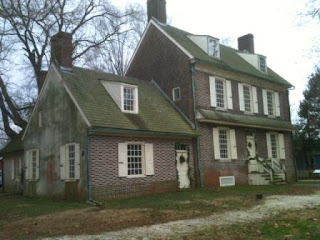On December 21st Perry was an invited guest of Hancock House conservator Alicea M. Bjornson to examine horological and wooden artifacts. Perry provided verbal expertise to stabilize the objects in question and suggestions for future display options and security.
The Hancock House is an excellent example of English Quaker patterned end brick houses associated with the lower Delaware Valley and southwestern New Jersey
1734 Hancock House
It was in the quiet early morning of March 21st, 1778 when British forces under Major Simcoe made their way up the Alloways creek. Coming ashore south of the village at Hancock’s Bridge, the British troops were focused on their destination, the house and tavern of Judge William Hancock Jr.
Here a small band of local militia was garrisoned for the purpose of protecting John Hancock’s Bridge, one of the three bridges which crossed the Alloways Creek. The British had been repulsed by the local militia just three days before at Quinton’s bridge.
When Simcoe’s troops took the sleeping militia by surprise, the quiet countryside was pierced by the cries of men as they were bludgeoned and bayoneted.
The Queen’s Rangers and local Torres followed orders to:
“Spare No One”
The dawn brought with it the reality of what had occurred in the early morning hours. Judge Hancock was found mortally wounded in his house. The british met their objective and the result was Salem County



No comments:
Post a Comment